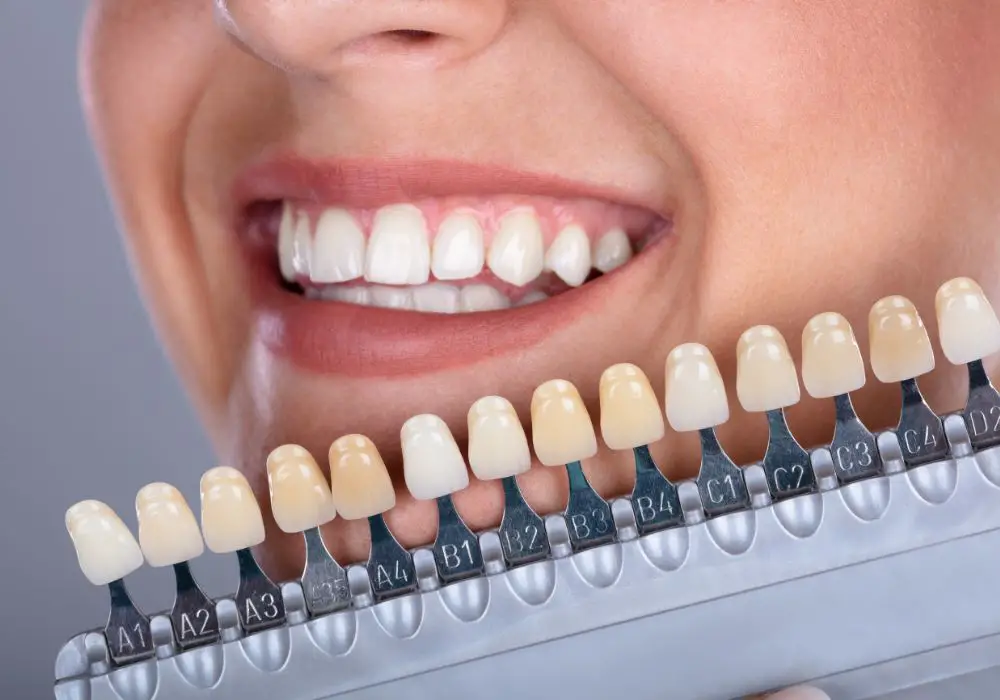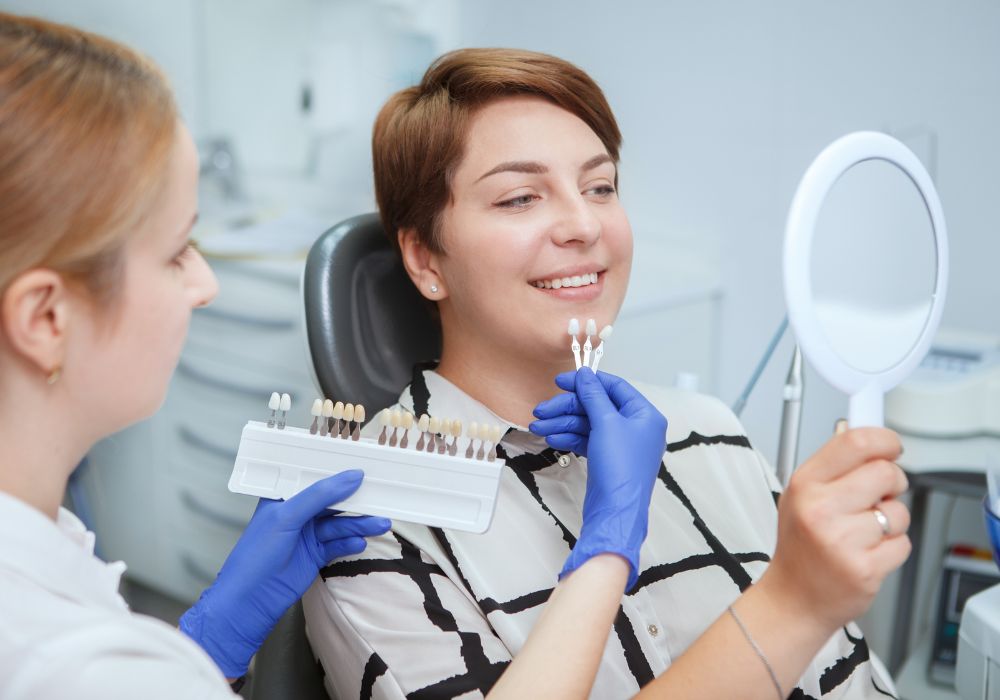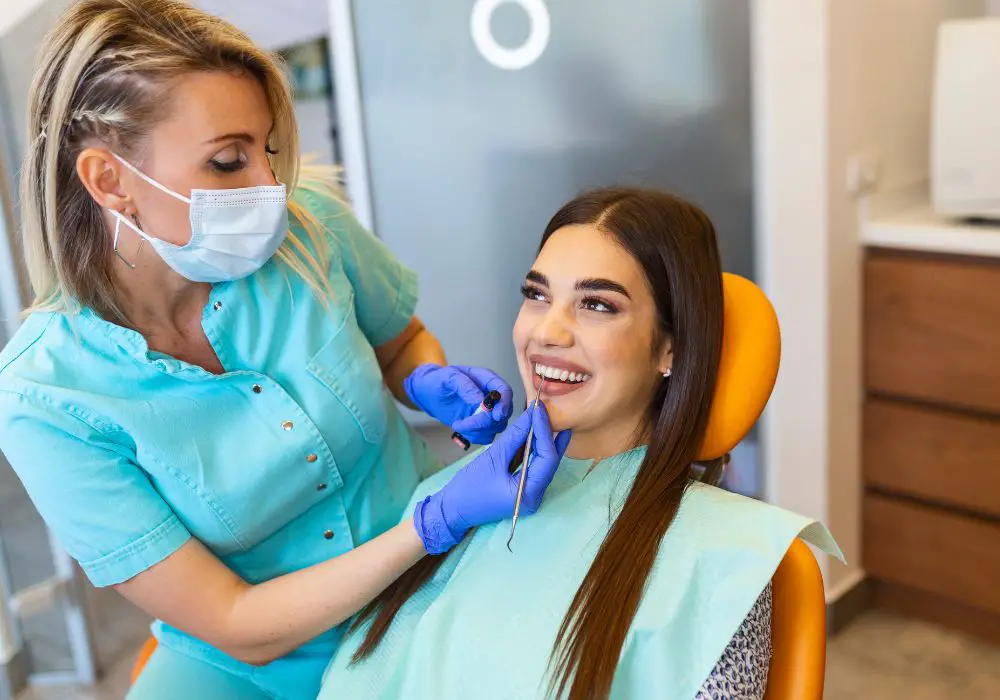Are you concerned about the shade of your teeth? You’re not alone. Many people wonder which teeth shade is best and how they can achieve it. The truth is, there isn’t a one-size-fits-all answer to this question, as the best teeth shade for you will depend on a variety of factors.
One factor to consider is your natural tooth color. Your dentist can help you determine your current shade and make recommendations based on your unique situation. It’s also important to consider your skin tone when choosing a teeth shade, as certain shades may complement your complexion better than others. Ultimately, the best teeth shade for you is the one that makes you feel confident and happy with your smile.
Understanding Teeth Shades

When it comes to teeth shades, it can be difficult to know which one is best for you. Teeth shades are typically measured on a scale that ranges from A to D, with A being the lightest and D being the darkest. Understanding teeth shades can help you make informed decisions about your dental health and cosmetic treatments.
The three components that make up teeth shades are value, hue, and chroma. Value refers to how light or dark the tooth is, while hue refers to the actual color of the tooth. Chroma refers to how much of the same color is in the tooth. By separating these three components, shade guides have become more accurate.
The typical shade for a tooth is A3, which is considered a normal color and is found in around 70% of the population. A B1 shade is considerably lighter than A3 and is typically considered the lightest naturally occurring shade. However, it’s important to note that the “best” shade for your teeth depends on your personal preference and what looks natural for your face shape and skin tone.
If you’re considering teeth whitening treatments, it’s important to consult with a dental professional to determine the best shade for your teeth. Whitening treatments can often make teeth too white, which can look unnatural and even make you appear older. A dental professional can help you achieve a natural-looking shade that complements your overall appearance.
In conclusion, understanding teeth shades is an important aspect of dental health and cosmetic treatments. By knowing the components that make up teeth shades and consulting with a dental professional, you can achieve a natural-looking shade that enhances your smile.
Factors Influencing Teeth Shade
When it comes to teeth shade, there are several factors that can influence the natural color of your teeth. Some of these factors are beyond your control, while others can be managed with proper dental care and lifestyle choices. Here are some of the most common factors that can influence teeth shade:
Genetics
Your genetics play a significant role in determining the natural color of your teeth. Some people are born with naturally whiter teeth, while others have darker or yellowish teeth. If your parents have naturally darker teeth, it is likely that you will also have darker teeth. However, genetics is not the only factor that determines teeth shade, and there are other factors that you can control to achieve a brighter smile.
Age
As you age, your teeth can become darker or yellowish due to natural wear and tear. The enamel on your teeth can wear away over time, exposing the dentin layer, which is naturally yellow in color. Additionally, as you age, your teeth can become more porous, making them more susceptible to staining from food and drinks.
Diet and Lifestyle
Your diet and lifestyle can have a significant impact on the color of your teeth. Certain foods and drinks, such as coffee, tea, red wine, and dark-colored fruits and vegetables, can stain your teeth over time. Smoking and tobacco use can also cause yellowing and discoloration of your teeth. Proper dental care, such as regular brushing and flossing, can help remove surface stains and prevent further discoloration.
In conclusion, there are several factors that can influence the natural color of your teeth. While some of these factors are beyond your control, others can be managed with proper dental care and lifestyle choices. By understanding these factors and taking steps to maintain good oral hygiene, you can achieve a brighter, healthier smile.
Popular Teeth Shades

When it comes to teeth shades, there are two main categories: natural shades and bleached shades.
Natural Shades
Natural shades are the colors of teeth that have not been artificially altered. The typical shade for a tooth is A3, which is considered a normal color and is present in around 70% of the population. A B1 shade is considerably lighter than A3 and is typically considered the lightest naturally occurring shade.
Other natural shades include:
- A1: A slightly lighter shade than A3
- A2: A shade that is slightly darker than A3
- B2: A slightly darker shade than A3
Bleached Shades
Bleached shades are the colors of teeth that have been artificially whitened through various methods, such as professional whitening treatments or at-home whitening kits. The shade of bleached teeth can vary depending on the method used and the individual’s starting shade.
Some popular bleached shades include:
- B1: A bright, white shade that is often referred to as “Hollywood white”
- C1: A slightly less bright shade than B1, but still noticeably whiter than natural teeth
- D1: A shade that is even less bright than C1, but still whiter than natural teeth
It’s important to note that the shade of your teeth is largely determined by genetics, and not everyone’s teeth will respond the same way to bleaching treatments. Additionally, overuse of whitening products can lead to damage to the enamel and sensitivity in the teeth.
Overall, the best teeth shade is the one that makes you feel confident and happy with your smile. Whether you prefer a natural shade or a bleached shade, it’s important to maintain good oral hygiene habits to keep your teeth healthy and looking their best.
Choosing the Right Shade
When it comes to choosing the right shade for your teeth, there are a few factors to consider. Here are two key sub-sections to help you make the best decision for your needs.
Professional Consultation
One of the best ways to determine the best shade for your teeth is to consult with a dental professional. They can evaluate your teeth and provide recommendations based on your unique needs and goals. They can also help you understand the different shades available and which one would be most appropriate for your specific situation.
During a consultation, your dentist may use a shade guide to help you visualize the different options available. This guide typically includes a range of shades from light to dark. Your dentist may also take into account factors such as your skin tone, eye color, and overall facial features to help you choose the best shade for your smile.
Personal Preference
While a professional consultation is an important part of the process, personal preference is also an important factor to consider. Ultimately, you want to choose a shade that you feel comfortable with and that makes you feel confident in your smile.
Consider your lifestyle and the image you want to project. If you have a more formal job or attend a lot of events, you may want to choose a shade that is closer to natural white. On the other hand, if you have a more casual lifestyle, you may feel comfortable with a brighter, whiter shade.
It’s important to keep in mind that choosing a shade that is too bright or too dark can look unnatural and draw unwanted attention to your teeth. It’s best to choose a shade that is a good match for your natural teeth and that complements your overall appearance.
In summary, choosing the right shade for your teeth is a personal decision that should be made with the help of a dental professional and your own personal preferences in mind. By taking the time to consider these factors, you can choose a shade that will help you feel confident in your smile for years to come.
Maintaining Your Teeth Shade

To keep your teeth looking their best, it’s important to maintain their shade. Here are some tips to help you do just that.
Regular Dental Checkups
Regular dental checkups are essential for maintaining your teeth shade. During these visits, your dentist will clean your teeth and check for any signs of decay or other issues that could affect the color of your teeth. They can also provide you with advice on how to maintain your teeth shade at home.
Home Care Practices
In addition to regular dental checkups, there are several home care practices you can follow to keep your teeth looking their best. Here are a few tips:
- Brush your teeth at least twice a day with a fluoride toothpaste.
- Floss daily to remove plaque and food particles from between your teeth.
- Use a mouthwash to help kill bacteria and freshen your breath.
- Avoid foods and drinks that can stain your teeth, such as coffee, tea, and red wine.
- If you do consume staining foods or drinks, rinse your mouth with water afterward.
- Quit smoking or using tobacco products, as they can cause yellowing of the teeth.
By following these tips, you can help maintain your teeth shade and keep your smile looking bright and healthy. Remember, good oral hygiene practices are essential for maintaining your overall dental health.
Frequently Asked Questions
What are the different tooth shade options available?
There are multiple tooth shade options available, ranging from A1 (the lightest) to D4 (the darkest). Your dentist can help you determine which shade is best for your individual needs.
What factors determine the best tooth shade for an individual?
The best tooth shade for an individual depends on several factors, including their natural tooth color, skin tone, and personal preference. Your dentist can help you determine the best shade for you.
Is it possible to change the natural tooth shade?
Yes, it is possible to change the natural tooth shade through various methods such as teeth whitening treatments or dental veneers. However, it is important to consult with your dentist before undergoing any whitening treatments to ensure they are safe and effective.
Which tooth shade is most commonly preferred?
The most commonly preferred tooth shade varies among individuals, but generally, a shade close to A1 or B1 is preferred for a natural-looking smile.
What is the difference between A1 and B1 tooth shades?
A1 and B1 are both light tooth shades, but A1 is slightly lighter and has more of a grayish tint, while B1 has a slightly warmer, yellowish tint.
What are some tips for maintaining a healthy tooth shade?
Maintaining a healthy tooth shade involves practicing good oral hygiene habits, such as brushing twice a day, flossing daily, and visiting your dentist regularly for cleanings and check-ups. Additionally, avoiding foods and drinks that can stain your teeth, such as coffee and red wine, can help keep your teeth looking their best.






